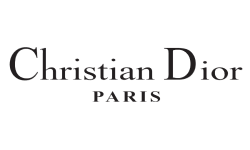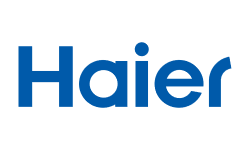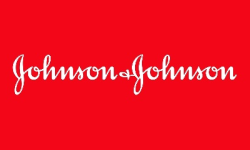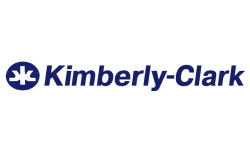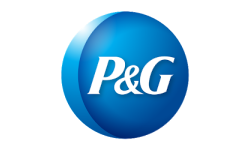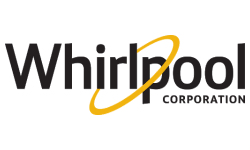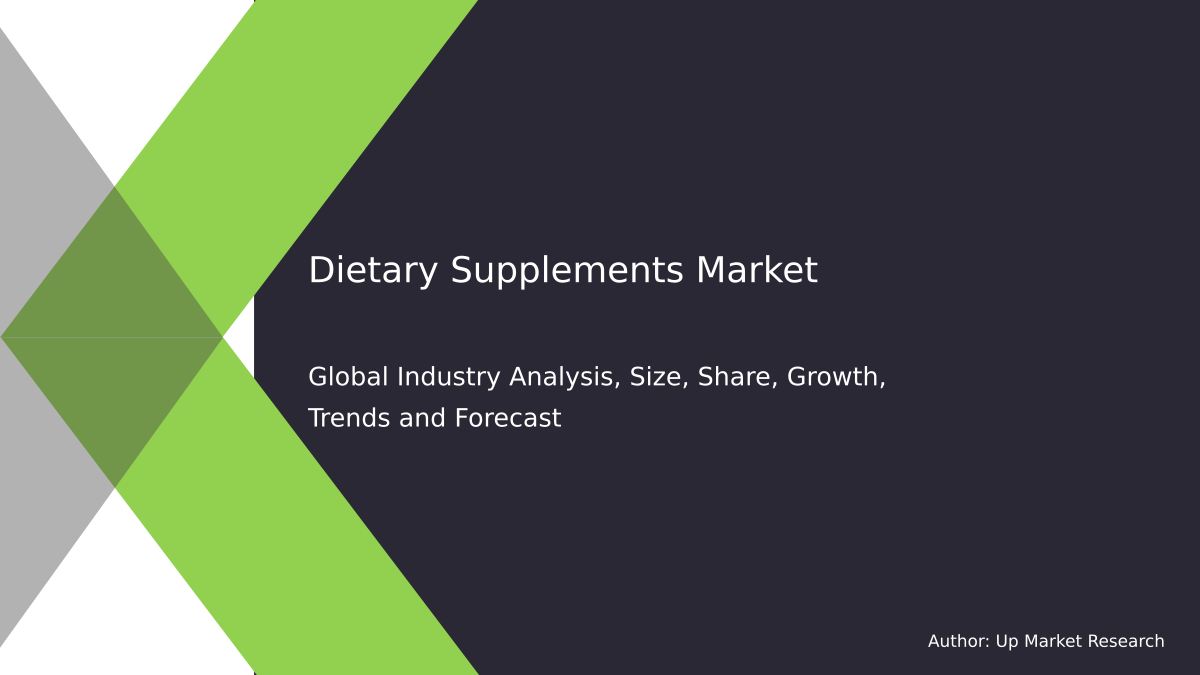
Global L-carnitine Market by Process (Bioprocess, Chemical Synthesis), by Product (Food & Pharmaceutical Grade, Feed Grade) and Region (North America, Latin America, Europe, Asia Pacific and Middle East & Africa), Forecast To 2028
Summary of the Report
Global L-carnitine market was worth USD 185.0 Million in 2020. It is expected to grow at a compound annual rate of 5.1% between 2021 and 2028. Due to an increasing health-conscious consumer base and increased product launches that contain L-carnitine, the market is experiencing a significant growth.
Market growth is expected to be driven by increasing awareness about the benefits of L-carnitine supplementation, such as improved muscle repair, reduced muscle soreness and muscle gain. The market is expected to grow over the forecast period due to rising use of L-carnitine supplements for post-exercise recovery, Weight management, as well as healthy aging.
The United States is the third largest market for biopharmaceuticals in the world and is a leader in biopharmaceutical research. L-carnitine will be used in medicine to treat diabetes, thyroid disease, high blood pressure, and other heart conditions due to the expansion of the U.S. pharmaceutical and biopharmaceutical industry.
People with low levels L-carnitine in their bodies can take L-carnitine as a supplement. People with low levels of L-carnitine can be caused by many factors, including skeletal myopathies and ingestion of multiple drugs. The market will benefit from increased awareness and concern about health issues, as well as a growing range of treatments for various disorders and diseases over the forecast period.
According to data published by the National Library of Medicine (US Government), L-carnitine was also found to improve cows' metabolism and increase lactation. According to data published by Oxford University Press, L-carnitine is also used for muscle recovery and fuel efficiency in horses. It can also be used to improve performance in dogs and horses. Market growth is expected to be aided by the L-carnitine supplement's benefits over the forecast period.
From the beginning of 2020, COVID 19 severely disrupted supply chains, retail distribution and consumer behavior for many products and services around the globe. L-carnitine saw a spike in demand due to the increased preference of consumers for wellness and health products. This reduces the risk of developing cardiovascular disease.
Researchers at Bristol Medical School's MRC Integrative Epidemiology Unit, U.K., have also concluded that L-carnitine, and its derivative, acetylcarnitine, provide strong protection against severe COVID 19. This study showed that 40% of patients with severe COVID-19 are less likely to develop it if their blood levels are doubled. Because large, randomized trials can be expensive and time-consuming, the study was limited to small samples. But, this promising L-carnitine result on COVID 19 severe patients is expected to have a positive impact on its demand in a shorter time.
Process Insights
Bioprocess was the dominant market segment and earned the highest revenue share at over 76.0% for 2020. Manufacturers have had to increase their production yield due to rising commercial demand for L-carnitine. The biological processes that use enzymes and microorganisms to produce L-carnitine are essentially asymmetric and offer high production yields.
A bioprocess that uses achiral precursors' biotransformations, such as?-butyrobetaine and crotonobetaine and 3-dehydrocarnitine or racemic mixtures like D, L, carnitinamide, D. L-acyl carbnitine and D, L-carnitine is the most common way to make L-carnitine. It also yields the highest yield. There are also many microorganisms such as Escherichia coli and Proteus mirabilis.
Chemical synthesis is slowly taking off because it can produce L-carnitine at an industrial scale. There are many chemical methods that can be used to synthesize L-carnitine. These include asymmetric synthesis and chemical multi-step racing. Many of these steps are time-consuming and not practical for industrial scale production.
Chemical multistep racing is one of the most common chemical synthesis methods to produce L-carnitine. From this, D-carnitine is made as a byproduct. The process usually begins with trimethylamine and epichlorohydrin, then the mixture is separated by fractioned crystallization.
Product Insights
Food and pharmaceutical grade dominated the market, accounting for more than 78.0% of the total revenue in 2020. L-carnitine, both food and pharmaceutical grade, is used primarily for human consumption in many applications, including healthy aging, post-exercise recovery, weight management, and infant nutrition.
Although the product can be found in some foods such as meat, avocado, and beans it is necessary to maintain a healthy level. This is dependent on age, diet, and other factors. It can be consumed in many ways, including oral intake through nutritional supplements, medicines and functional foods and beverages as well as injections. It is important in helping to facilitate the recovery process after physical activity.
L-carnitine feed grade is a common ingredient in animal pharmaceuticals. It is essential for animal energy metabolism and provides many benefits, including weight management and healthy function in the heart and liver. The livestock industry, pet food producers, and food manufacturers for racing animals all use feed grade extensively. It is widely used in dry food and treats for dogs and cats. It can also be used to provide antioxidants and muscle recovery for dogs who work.
The main use of feed grade in pet health supplements is to reduce the risk of heart disease. It is especially useful in cases where there are dilated cardiomyopathy. It can also be used to treat obesity, diabetic ketoacidosis and hyperlipidemia. These are common conditions in cats and dogs. It is also used to treat fatty liver syndrome.
Application Insights
Healthcare products dominated the market, accounting for more than 34.0% of the total revenue in 2020. L-carnitine can be found in many healthcare products, including weight loss supplements and enhanced stamina.
The dietary supplement market will reach USD 272.4 million by 2028 due to rising obesity rates, increased consumer awareness about personal health and well-being, lifestyle changes, and increasing spending power. Over the forecast period, manufacturers will have lucrative opportunities due to this rapid growth of the dietary supplements industry.
L-carnitine, an essential micronutrient, is required for growth performance in many animal species including poultry, swine and cows as well as horses and companion animals. Supplementation with L-carnitine in diet has positive effects on animal nutrition as it provides sufficient energy and protein.
L-carnitine supplementation in animals' diets significantly increases their body weight, feed intake, or feed conversion in broiler chicken. L-carnitine supplementation in feed may improve feed conversion efficiency and energy utilization in poultry.
The shift from carbonated beverages to functional drinks has been observed globally. This can be seen in the increase in functional beverages like kombucha and relaxation beverages as well as botanical ingredients-based beverages.
These shifting consumer habits are causing beverage manufacturers to introduce new beverages that contain L-carnitine. The new FOCUSAID beverage, which contains L-carnitine, was launched by the U.S.-based LIFEAID Beverage Co. in March 2020. Over the forecast period, the product's growth will be driven by the expansion of L-carnitine within the functional food and beverage market.
Regional Insights
North America was the dominant market for L-carnitine in 2020, accounting for more than 37.0% of the total revenue. The functional food and beverage industry has experienced a significant growth in North America over the past decade due to the development of a healthier consumer base.
L-carnitine has been proven to be an important component in the treatment and prevention many ailments. This has made it a popular functional food and beverage ingredient. Consumers are more inclined to consume functional foods and drinks that contain L-carnitine due to their increased energy, stamina, and other health benefits. Over the forecast period, the market is expected to grow due to the increased preference for L-carnitine supplementation by North American consumers.
L-carnitine is also an effective weight management tool in the treatment and prevention of obesity. The U.S. and Mexico have the highest obesity rates in the world. This has led to increased use of weight loss supplements. The market for the region is expected to grow over the forecast period.
Europe's nutraceutical market is expected to expand due to increased use of supplements to prevent health problems. Due to side effects, herbal products are preferred by consumers over pharmaceuticals. Market growth is expected to be driven by increasing acceptance of nutraceuticals that improve health and do not pose any risk to health.
Farmindustria published a report in 2016 indicating that Italy was first in the EU in terms of exports of pharma products. The forecast period will also see an increase in employment and investments in research-and-development. This will likely increase the market growth over the next years.
The Asia Pacific region's consumption of functional foods and beverages is increasing due to rising disposable incomes and increased awareness about nutritional products and ingredients. The overall market has seen a renewed interest in functional foods, as more people are looking for food and drinks that contain L-carnitine. The public's growing interest in L-carnitine is due to its many health benefits and potential uses.
Market Share Insights & Key Companies
Companies are currently working on their brand strategies to appeal to the targeted audience for the applications. This market is very competitive. The market is highly competitive. Major companies compete not only with international players but also with regional players. The market is highly concentrated, with only a few players holding a large share of the market. There are many smaller players that offer customized products to the end-users.
Due to intense competition, pricing pressure is likely to be felt in the market. Over the forecast period, there has been a steady increase in mergers in the industry. Increased mergers are expected to increase competition among high-value players. This industry will see an increase in market entrants which is expected, to further drive the competition. The market leader in L-carnitine is:
-
Lonza
-
Northeast Pharmaceutical Group Co., Ltd.
-
Biosint S.p.A.
-
Cayman Chemical
-
Merck KGaA
-
Tokyo Chemical Industry Co., Ltd.
-
Ceva
-
Kaiyuan Hengtai Nutrition Co., Ltd.
-
ChengDa PharmaCeuticals Co., Ltd.
-
Huanggang Huayang Pharmaceutical Co. Ltd.
-
HuBeiYuancheng SaichuangTechnology Co, .Ltd.
Up Market Research published a new report titled “L-carnitine Market research report which is segmented by Process (Bioprocess, Chemical Synthesis), by Product (Food & Pharmaceutical Grade, Feed Grade), By Players/Companies Huanggang Huayang Pharmaceutical Co Ltd, Tokyo Chemical Industry Co Ltd, Cayman Chemical, Merck KGaA, Biosint SpA, Kaiyuan Hengtai Nutrition Co Ltd, Northeast Pharmaceutical Group Co Ltd (NEPG), HuBeiYuancheng SaichuangTechnology Co Ltd, Ceva, Lonza, ChengDa PharmaCeuticals Co Ltd”. As per the study the market is expected to grow at a CAGR of XX% in the forecast period.
Report Scope
| Report Attributes | Report Details |
| Report Title | L-carnitine Market Research Report |
| By Process | Bioprocess, Chemical Synthesis |
| By Product | Food & Pharmaceutical Grade, Feed Grade |
| By Companies | Huanggang Huayang Pharmaceutical Co Ltd, Tokyo Chemical Industry Co Ltd, Cayman Chemical, Merck KGaA, Biosint SpA, Kaiyuan Hengtai Nutrition Co Ltd, Northeast Pharmaceutical Group Co Ltd (NEPG), HuBeiYuancheng SaichuangTechnology Co Ltd, Ceva, Lonza, ChengDa PharmaCeuticals Co Ltd |
| Regions Covered | North America, Europe, APAC, Latin America, MEA |
| Base Year | 2020 |
| Historical Year | 2018 to 2019 (Data from 2010 can be provided as per availability) |
| Forecast Year | 2028 |
| Number of Pages | 203 |
| Number of Tables & Figures | 143 |
| Customization Available | Yes, the report can be customized as per your need. |
The report covers comprehensive data on emerging trends, market drivers, growth opportunities, and restraints that can change the market dynamics of the industry. It provides an in-depth analysis of the market segments which include products, applications, and competitor analysis.

Global L-carnitine Market Report Segments:
The market is segmented by Process (Bioprocess, Chemical Synthesis), by Product (Food & Pharmaceutical Grade, Feed Grade).
L-carnitine Market research report delivers a close watch on leading competitors with strategic analysis, micro and macro market trend and scenarios, pricing analysis and a holistic overview of the market situations in the forecast period. It is a professional and a detailed report focusing on primary and secondary drivers, market share, leading segments and geographical analysis. Further, key players, major collaborations, merger & acquisitions along with trending innovation and business policies are reviewed in the report.
Key Benefits for Industry Participants & Stakeholders:
- Industry drivers, restraints, and opportunities covered in the study
- Neutral perspective on the market performance
- Recent industry trends and developments
- Competitive landscape & strategies of key players
- Potential & niche segments and regions exhibiting promising growth covered
- Historical, current, and projected market size, in terms of value
- In-depth analysis of the L-carnitine Market
Overview of the regional outlook of the L-carnitine Market:
Based on region, the market is segmented into North America, Europe, Asia Pacific, Latin America and Middle East & Africa (MEA). North America region is further bifurcated into countries such as U.S., and Canada. The Europe region is further categorized into U.K., France, Germany, Italy, Spain, Russia, and Rest of Europe. Asia Pacific is further segmented into China, Japan, South Korea, India, Australia, South East Asia, and Rest of Asia Pacific. Latin America region is further segmented into Brazil, Mexico, and Rest of Latin America, and the MEA region is further divided into GCC, Turkey, South Africa, and Rest of MEA.

Highlights of The L-carnitine Market Report:
- The market structure and projections for the coming years.
- Drivers, restraints, opportunities, and current trends of L-carnitine Market.
- Historical data and forecast.
- Estimations for the forecast period 2028.
- Developments and trends in the market.
1. Bioprocess
2. Chemical Synthesis
7. By Product:1. Food & Pharmaceutical Grade
2. Feed Grade
- Market scenario by region, sub-region, and country.
- Market share of the market players, company profiles, product specifications, SWOT analysis, and competitive landscape.
- Analysis regarding upstream raw materials, downstream demand, and current market dynamics.
- Government Policies, Macro & Micro economic factors are also included in the report.
We have studied the L-carnitine Market in 360 degrees via. both primary & secondary research methodologies. This helped us in building an understanding of the current market dynamics, supply-demand gap, pricing trends, product preferences, consumer patterns & so on. The findings were further validated through primary research with industry experts & opinion leaders across countries. The data is further compiled & validated through various market estimation & data validation methodologies. Further, we also have our in-house data forecasting model to predict market growth up to 2028.
How you may use our products:
- Correctly Positioning New Products
- Market Entry Strategies
- Business Expansion Strategies
- Consumer Insights
- Understanding Competition Scenario
- Product & Brand Management
- Channel & Customer Management
- Identifying Appropriate Advertising Appeals

Reasons to Purchase the L-carnitine Market Report:
- The report includes a plethora of information such as market dynamics scenario and opportunities during the forecast period
- Segments and sub-segments include quantitative, qualitative, value (USD Million,) and volume (Units Million) data.
- Regional, sub-regional, and country level data includes the demand and supply forces along with their influence on the market.
- The competitive landscape comprises share of key players, new developments, and strategies in the last three years.
- Comprehensive companies offering products, relevant financial information, recent developments, SWOT analysis, and strategies by these players.
Chapter 2 Assumptions and Acronyms Used
Chapter 3 Research Methodology
Chapter 4 L-carnitine Market Overview
4.1 Introduction
4.1.1 Market Taxonomy
4.1.2 Market Definition
4.1.3 Macro-Economic Factors Impacting the Market Growth
4.2 L-carnitine Market Dynamics
4.2.1 Market Drivers
4.2.2 Market Restraints
4.2.3 Market Opportunity
4.3 L-carnitine Market - Supply Chain Analysis
4.3.1 List of Key Suppliers
4.3.2 List of Key Distributors
4.3.3 List of Key Consumers
4.4 Key Forces Shaping the L-carnitine Market
4.4.1 Bargaining Power of Suppliers
4.4.2 Bargaining Power of Buyers
4.4.3 Threat of Substitution
4.4.4 Threat of New Entrants
4.4.5 Competitive Rivalry
4.5 Global L-carnitine Market Size & Forecast, 2018-2028
4.5.1 L-carnitine Market Size and Y-o-Y Growth
4.5.2 L-carnitine Market Absolute $ Opportunity
Chapter 5 Global L-carnitine Market Analysis and Forecast by Process
5.1 Introduction
5.1.1 Key Market Trends & Growth Opportunities by Process
5.1.2 Basis Point Share (BPS) Analysis by Process
5.1.3 Absolute $ Opportunity Assessment by Process
5.2 L-carnitine Market Size Forecast by Process
5.2.1 Bioprocess
5.2.2 Chemical Synthesis
5.3 Market Attractiveness Analysis by Process
Chapter 6 Global L-carnitine Market Analysis and Forecast by Product
6.1 Introduction
6.1.1 Key Market Trends & Growth Opportunities by Product
6.1.2 Basis Point Share (BPS) Analysis by Product
6.1.3 Absolute $ Opportunity Assessment by Product
6.2 L-carnitine Market Size Forecast by Product
6.2.1 Food & Pharmaceutical Grade
6.2.2 Feed Grade
6.3 Market Attractiveness Analysis by Product
Chapter 7 Global L-carnitine Market Analysis and Forecast by Region
7.1 Introduction
7.1.1 Key Market Trends & Growth Opportunities by Region
7.1.2 Basis Point Share (BPS) Analysis by Region
7.1.3 Absolute $ Opportunity Assessment by Region
7.2 L-carnitine Market Size Forecast by Region
7.2.1 North America
7.2.2 Europe
7.2.3 Asia Pacific
7.2.4 Latin America
7.2.5 Middle East & Africa (MEA)
7.3 Market Attractiveness Analysis by Region
Chapter 8 Coronavirus Disease (COVID-19) Impact
8.1 Introduction
8.2 Current & Future Impact Analysis
8.3 Economic Impact Analysis
8.4 Government Policies
8.5 Investment Scenario
Chapter 9 North America L-carnitine Analysis and Forecast
9.1 Introduction
9.2 North America L-carnitine Market Size Forecast by Country
9.2.1 U.S.
9.2.2 Canada
9.3 Basis Point Share (BPS) Analysis by Country
9.4 Absolute $ Opportunity Assessment by Country
9.5 Market Attractiveness Analysis by Country
9.6 North America L-carnitine Market Size Forecast by Process
9.6.1 Bioprocess
9.6.2 Chemical Synthesis
9.7 Basis Point Share (BPS) Analysis by Process
9.8 Absolute $ Opportunity Assessment by Process
9.9 Market Attractiveness Analysis by Process
9.10 North America L-carnitine Market Size Forecast by Product
9.10.1 Food & Pharmaceutical Grade
9.10.2 Feed Grade
9.11 Basis Point Share (BPS) Analysis by Product
9.12 Absolute $ Opportunity Assessment by Product
9.13 Market Attractiveness Analysis by Product
Chapter 10 Europe L-carnitine Analysis and Forecast
10.1 Introduction
10.2 Europe L-carnitine Market Size Forecast by Country
10.2.1 Germany
10.2.2 France
10.2.3 Italy
10.2.4 U.K.
10.2.5 Spain
10.2.6 Russia
10.2.7 Rest of Europe
10.3 Basis Point Share (BPS) Analysis by Country
10.4 Absolute $ Opportunity Assessment by Country
10.5 Market Attractiveness Analysis by Country
10.6 Europe L-carnitine Market Size Forecast by Process
10.6.1 Bioprocess
10.6.2 Chemical Synthesis
10.7 Basis Point Share (BPS) Analysis by Process
10.8 Absolute $ Opportunity Assessment by Process
10.9 Market Attractiveness Analysis by Process
10.10 Europe L-carnitine Market Size Forecast by Product
10.10.1 Food & Pharmaceutical Grade
10.10.2 Feed Grade
10.11 Basis Point Share (BPS) Analysis by Product
10.12 Absolute $ Opportunity Assessment by Product
10.13 Market Attractiveness Analysis by Product
Chapter 11 Asia Pacific L-carnitine Analysis and Forecast
11.1 Introduction
11.2 Asia Pacific L-carnitine Market Size Forecast by Country
11.2.1 China
11.2.2 Japan
11.2.3 South Korea
11.2.4 India
11.2.5 Australia
11.2.6 South East Asia (SEA)
11.2.7 Rest of Asia Pacific (APAC)
11.3 Basis Point Share (BPS) Analysis by Country
11.4 Absolute $ Opportunity Assessment by Country
11.5 Market Attractiveness Analysis by Country
11.6 Asia Pacific L-carnitine Market Size Forecast by Process
11.6.1 Bioprocess
11.6.2 Chemical Synthesis
11.7 Basis Point Share (BPS) Analysis by Process
11.8 Absolute $ Opportunity Assessment by Process
11.9 Market Attractiveness Analysis by Process
11.10 Asia Pacific L-carnitine Market Size Forecast by Product
11.10.1 Food & Pharmaceutical Grade
11.10.2 Feed Grade
11.11 Basis Point Share (BPS) Analysis by Product
11.12 Absolute $ Opportunity Assessment by Product
11.13 Market Attractiveness Analysis by Product
Chapter 12 Latin America L-carnitine Analysis and Forecast
12.1 Introduction
12.2 Latin America L-carnitine Market Size Forecast by Country
12.2.1 Brazil
12.2.2 Mexico
12.2.3 Rest of Latin America (LATAM)
12.3 Basis Point Share (BPS) Analysis by Country
12.4 Absolute $ Opportunity Assessment by Country
12.5 Market Attractiveness Analysis by Country
12.6 Latin America L-carnitine Market Size Forecast by Process
12.6.1 Bioprocess
12.6.2 Chemical Synthesis
12.7 Basis Point Share (BPS) Analysis by Process
12.8 Absolute $ Opportunity Assessment by Process
12.9 Market Attractiveness Analysis by Process
12.10 Latin America L-carnitine Market Size Forecast by Product
12.10.1 Food & Pharmaceutical Grade
12.10.2 Feed Grade
12.11 Basis Point Share (BPS) Analysis by Product
12.12 Absolute $ Opportunity Assessment by Product
12.13 Market Attractiveness Analysis by Product
Chapter 13 Middle East & Africa (MEA) L-carnitine Analysis and Forecast
13.1 Introduction
13.2 Middle East & Africa (MEA) L-carnitine Market Size Forecast by Country
13.2.1 Saudi Arabia
13.2.2 South Africa
13.2.3 UAE
13.2.4 Rest of Middle East & Africa (MEA)
13.3 Basis Point Share (BPS) Analysis by Country
13.4 Absolute $ Opportunity Assessment by Country
13.5 Market Attractiveness Analysis by Country
13.6 Middle East & Africa (MEA) L-carnitine Market Size Forecast by Process
13.6.1 Bioprocess
13.6.2 Chemical Synthesis
13.7 Basis Point Share (BPS) Analysis by Process
13.8 Absolute $ Opportunity Assessment by Process
13.9 Market Attractiveness Analysis by Process
13.10 Middle East & Africa (MEA) L-carnitine Market Size Forecast by Product
13.10.1 Food & Pharmaceutical Grade
13.10.2 Feed Grade
13.11 Basis Point Share (BPS) Analysis by Product
13.12 Absolute $ Opportunity Assessment by Product
13.13 Market Attractiveness Analysis by Product
Chapter 14 Competition Landscape
14.1 L-carnitine Market: Competitive Dashboard
14.2 Global L-carnitine Market: Market Share Analysis, 2019
14.3 Company Profiles (Details – Overview, Financials, Developments, Strategy)
14.3.1 Huanggang Huayang Pharmaceutical Co Ltd
14.3.2 Tokyo Chemical Industry Co Ltd
14.3.3 Cayman Chemical
14.3.4 Merck KGaA
14.3.5 Biosint SpA
14.3.6 Kaiyuan Hengtai Nutrition Co Ltd
14.3.7 Northeast Pharmaceutical Group Co Ltd (NEPG)
14.3.8 HuBeiYuancheng SaichuangTechnology Co Ltd
14.3.9 Ceva
14.3.10 Lonza
14.3.11 ChengDa PharmaCeuticals Co Ltd
The global L-carnitine market has been segmented based on
By Process
- Bioprocess
- Chemical Synthesis
- Food & Pharmaceutical Grade
- Feed Grade
- Asia Pacific
- North America
- Latin America
- Europe
- Middle East & Africa
- Huanggang Huayang Pharmaceutical Co Ltd
- Tokyo Chemical Industry Co Ltd
- Cayman Chemical
- Merck KGaA
- Biosint SpA
- Kaiyuan Hengtai Nutrition Co Ltd
- Northeast Pharmaceutical Group Co Ltd (NEPG)
- HuBeiYuancheng SaichuangTechnology Co Ltd
- Ceva
- Lonza
- ChengDa PharmaCeuticals Co Ltd
Related Reports
Some other reports from this category!

